Some of the Samsung Galaxy A-Series have been named among the bestselling smartphones 85 in the world last year, with the Galaxy A54 5G 68 being a prime example. In which despite having a generally-hated chipset — the in-house Samsung Exynos 1380 — it was frequently praised for its great battery life, a rock-solid design, and a pretty capable camera set, all in a convincing price point starting at PHP 25K.
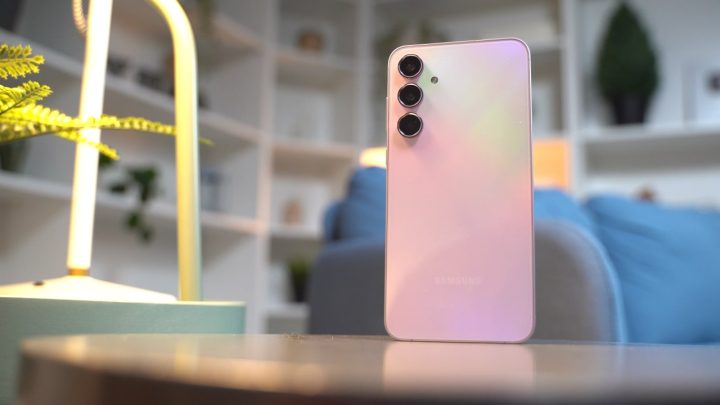
Now, its successor, the Galaxy A55 5G arrives on the scene carrying the same price tag. While it boasts a newer, more powerful Exynos chipset, the key question remains: can the Galaxy A55 5G meet or even surpass the high expectations set by its predecessor? Let’s find out in this full review.
Table of Contents
From the get-go, the Galaxy A55 looks very identical with the Galaxy A54, at least from afar. Because, as you get a closer look into it, then you will notice some little design changes that Samsung did on this phone.
At the rear protrudes the same camera layout on top of its glass back panel. The difference here lies in a couple of the phone’s color options, specifically the Awesome Lemon and Awesome Lilac — which is the variant that we have. They have this sort of iridescent effect going on.
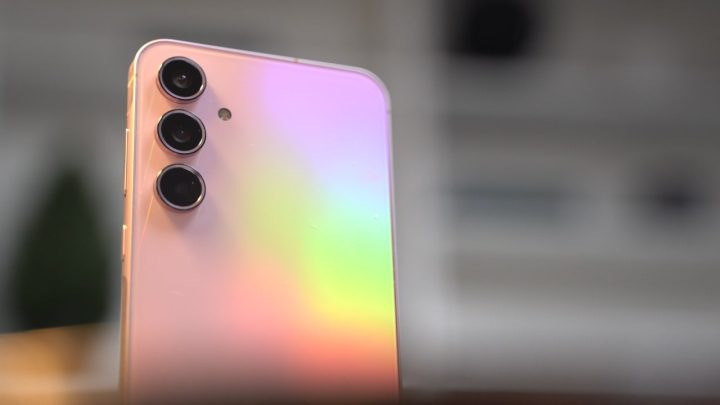
Depending on how the light hits it, you can see some rainbow hues on the Galaxy A55’s back panel. This wasn’t the case with the Galaxy A54. However, if you prefer a more subdued look, you can always choose the Awesome Iceblue or Awesome Navy options.
Moving on, we have another little design change: the frame. The phone gets more evenly flat on the sides this time around. It also now appears to be made of aluminum complemented with vertically brushed, semi-glossy finish along the frame.
On top of that, the volume rocker and the power button now have a bit of protrusion and a distinct, smoother texture compared to the rest of the frame. Not to mention, this said texture blends seamlessly on the outer extreme parts of the phone’s frame (as you can see in the close-up image below).
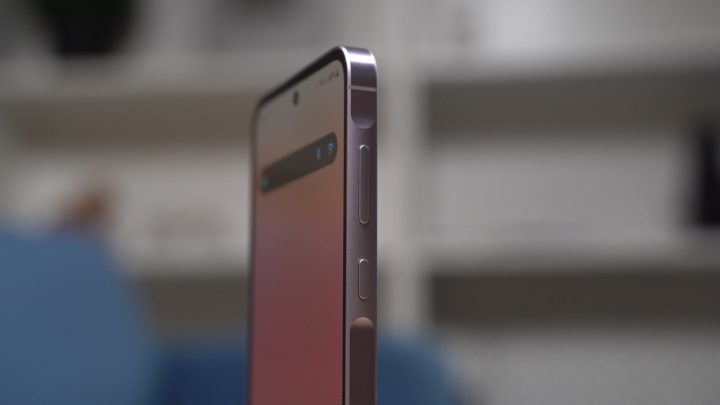
I have to say, I appreciate this design approach a lot as it gives the Galaxy A55 more character into it. Although, you wouldn’t really notice it at first glance, having a design as meticulous as this is worth a compliment, considering this is a mid-range device too.
Sandwiched on both the front and back panels is a Gorilla Glass Victus+ so I would expect it to have a tougher build quality along with scratch-resistant display. But even then, I’d feel better with a tempered glass on it for that extra screen protection.
Plus, it keeps the IP67 rating for water and dust resistance, meaning you can dunk the phone in fresh water up to a meter deep for half an hour. It’ll even hold up in a downpour. But remember, it’s not meant for swimming at the beach or in the pool.
Anyways, let’s check out its I/Os. The volume rocker and power button combo are located on the right side. At the bottom sees a speaker grill, a USB-C port, and two tiny holes whereas only the left hole (while facing the screen) has a microphone.
At the top, there’s the second microphone and the hybrid SIM tray. And yes, it has expandable storage via microSD. This leaves nothing on the left side, but there is something missing, right? A second loudspeaker, which we’ll talk about in the next segment.
Initially, I thought that this phone only has a mono loudspeaker as there is no speaker grill at the top. Turns out I was wrong since the phone’s earpiece acts as a second loudspeaker, achieving equally loud stereo audio.
In terms of sound quality, there is certainly strong bass coming out of both speakers and the mids are also popping off. I would say, I enjoyed listening to music on this phone with its stereo loudspeakers alone. There’s also a toggle on Dolby Atmos giving me richer sound quality.
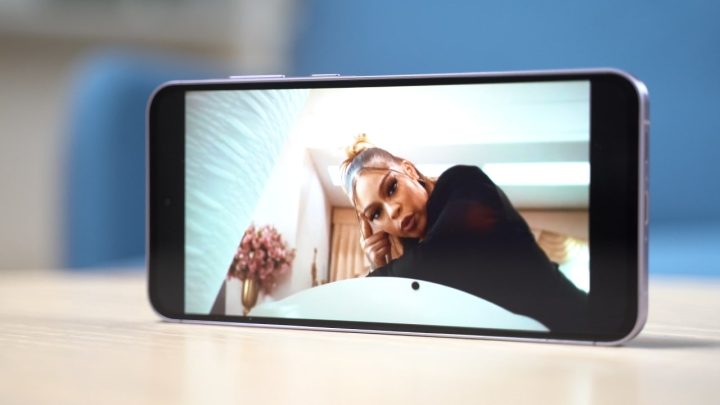
Adding to that is an above-average viewing experience, thanks to its 6.6-inch Super AMOLED display with support for 120Hz adaptive refresh rate. This screen can reach up to 1000 nits of peak brightness which is decent enough for outdoor use.
You also get more color coverage with support for HDR10+ and high-resolution playback with Widevine L1. I tested this on some YouTube videos with higher resolution, and I’m happy to report that it can play past 1080p videos. I was able to play a 2160p or Ultra HD video with no apparent lags as it jumps from auto-480p quality.
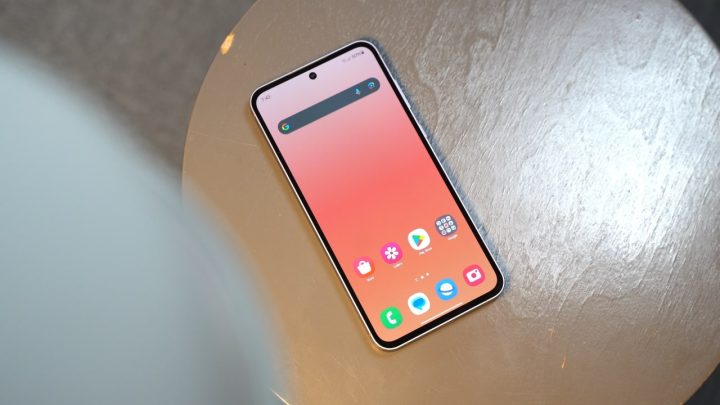
My one gripe is not having a perfectly even bezels all around. The Galaxy A55 isn’t quite there yet as the upper bezel, especially the chin are a bit thicker than the sides. This makes the rounded corners of the display not seamlessly align with the phone’s frame, so there’s that.
Going back at the rear panel, the Galaxy A55 has a triple camera system consisting of a 50-megapixel main, 12-megapixel ultrawide, and 5-megapixel macro lenses — the same setup as its predecessor.
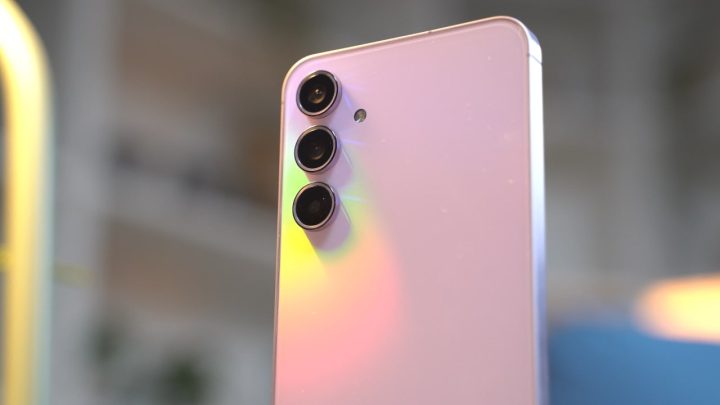
Under ample lighting, naturally, the images captured by this device are sharp with near-accurate color reproduction. We took it for outdoor snaps, and we got these photos showing the luscious greenery around Taal Volcano.
The cameras cover good dynamic range but going for a closer look reveals that clarity isn’t that great. There is noticeable noise zooming in even in those well-lit environments. Night photography is an improvement though at least from the rear. Under low light, the captured photos show decent dynamic range, and interestingly, less noise.
Videos are mid at best, but the phone can capture up to Ultra HD 4K at 30 frames per second with support for optical image stabilization. Unfortunately, the noise is still noticeable even at 4K.
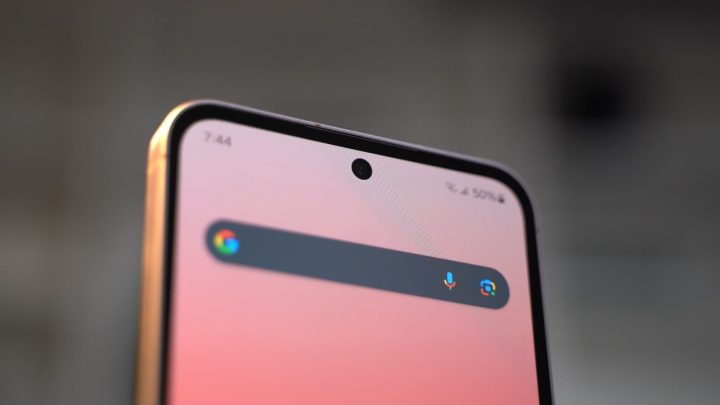
Selfies aren’t its strong suit either. The device struggled to get consistent skin tones. Most of the times, the selfies lean to warmer tones and sometimes it gets cooler tones in Portrait mode. You also don’t want to use Portrait mode in low light as the phone makes the image look oversaturated and unnatural in post-processing.
Overall, the camera improvements aren’t as drastic as I expected, likely due to the same lenses being used. Perhaps it’s decent enough for casual social media sharing.
Software-wise, the Galaxy A55 runs OneUI 6.1 on top of Android 14. Fortunately, unlike previous iterations, the bloatware in this thing is bearable. It includes some Samsung essentials like the company’s browser, a duplicate Messages app (which now prompts users to switch to Google Messages as the default). There’s also the Samsung Store alongside several third-party apps like Spotify and Netflix.
The software is lenient enough that it actually allows you to uninstall some Samsung apps. What I really liked about OneUI 6.1 on this device is that it delivers a full-fledged OneUI experience. I particularly enjoyed the adaptive blur on certain UI elements like the notification panel, which blurs the background. As well as the media player that benefits from a subtle audio waveform animation that I found visually appealing.
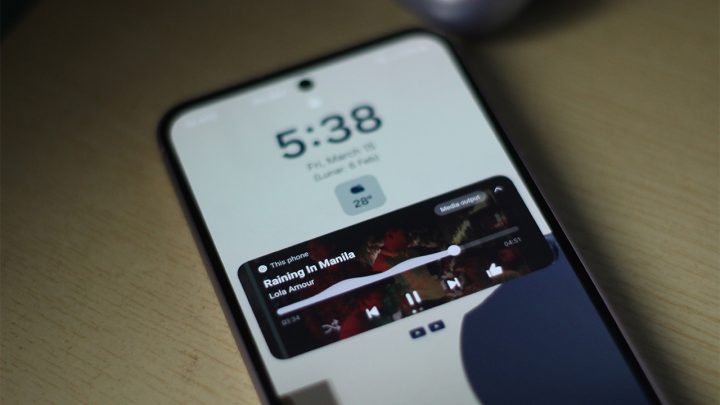
It offers more lock screen customization options. I also appreciated the phone’s fluidity in animations, such as navigating between apps, fingerprint unlocking, and more. Speaking of biometrics, this model appears to use an optical fingerprint sensor.
As expected, unlocking with this sensor takes a fraction of a second longer compared to the ultrasonic sensors found in Samsung’s flagship phones.
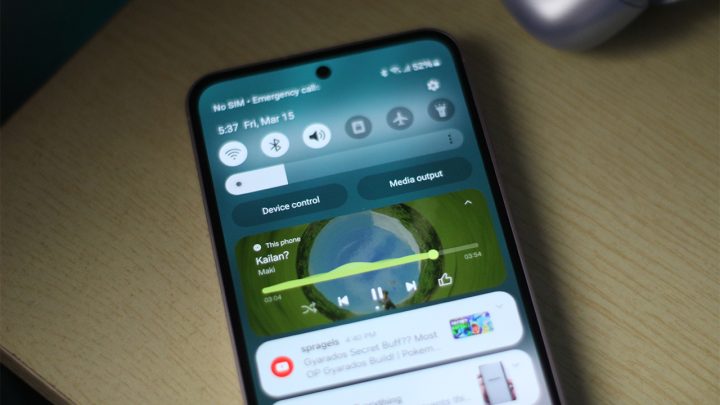
I also liked that the design motif of OneUI stays true to Android’s core design principles. It is consistent! While using the phone, I would definitely say it feels like a high-end Android device, not just a cheap iOS knockoff.
Now let’s talk about the elephant in the room: the Exynos 1480 chipset inside the Galaxy A55.
Hold up as Samsung certainly cooked in this iteration. Apparently, it boasts significantly higher benchmarks than the Exynos 1380 on the Galaxy A54 (as it should be). Previously on AnTuTu, the A54 only garnered 504,935, while on A55, it scored 728,872.
Geekbench CPU scores on the Galaxy A55 are also relatively higher than its predecessor. The A55 got 1,143 on single core and 3,340 on multi cores. That’s a drastic jump from A54’s 893 and 2,291 scores, respectively.
Well, benchmark scores don’t necessarily reflect real-world use cases. During my gaming sessions, even after several minutes of playing Asphalt 9 at high graphics and 60 frames per second, the phone did heat up slightly, but it remained manageable.
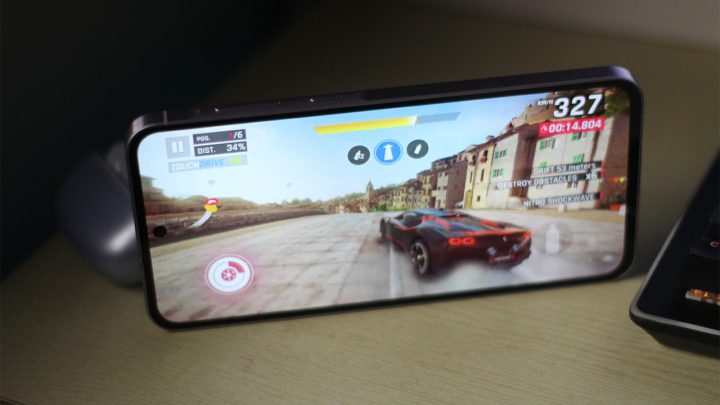
Genshin Impact is playable, albeit at low graphics settings. However, for less demanding titles like Mobile Legends, the Galaxy A55 will perform just fine. Although, one caveat is that the phone currently lacks the Ultra graphics option in MLBB.
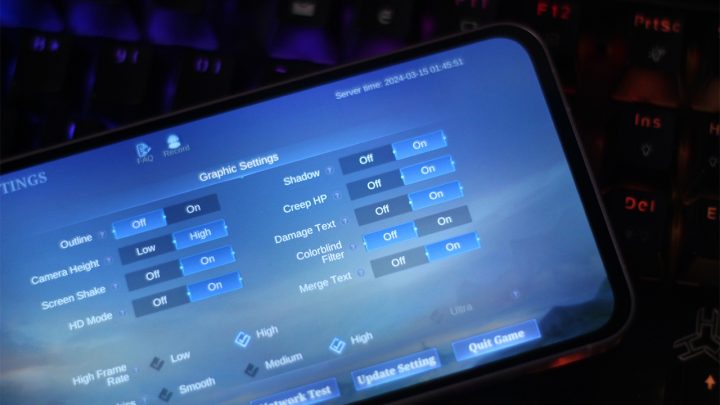
Our unit comes with 8GB of onboard RAM that can be expanded by up to an additional 8GB. Storage capacity is 128GB, and as mentioned earlier, it supports a microSD slot for storage expansion, which is always a plus in my book.
For connectivity, the Galaxy A55 boasts 5G capability with dual nano-SIM slots. There’s also an eSIM support in here so you can slip in a microSD card without sacrificing dual SIM capability. Other connectivity features include Wi-Fi 6, Bluetooth 5.3, and NFC.
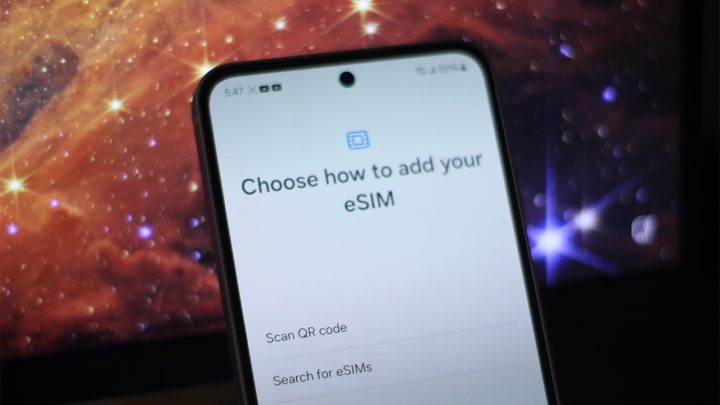
As for battery, the Galaxy A55 packs a 5000mAh cell paired with up to 25W wired charging. However, the charging brick isn’t included in the box and is sold separately, which is quite a bummer.
Well, in terms of battery life, we obtained varying results from our tests. In PCMark, the phone managed to pump out 13 hours and 12 minutes. In our proprietary video loop test, the phone lasted an even longer 22 hours and 46 minutes.
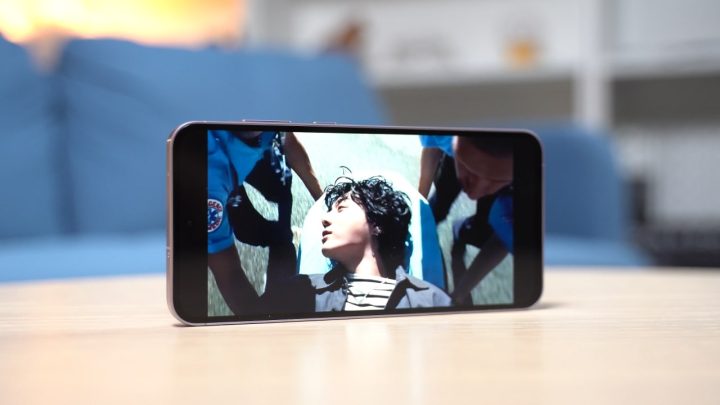
In Settings, there’s a battery protection option that extends the battery’s lifespan based on the user’s charging pattern. The phone also displays the remaining charging time until full charge, which is neat. When I used a much faster 33W charging brick, the remaining time to full charge was an hour and 23 minutes, so it’s still decently fast.
So, can the Galaxy A55 5G surpass its predecessor? It’s a close call.
Given that the newer Exynos 1480 chipset boasts impressive benchmarks and smoother performance, the camera system remains largely unchanged. On the bright side, the Samsung Galaxy A55 5G offers a compelling package with a gorgeous display, longer battery life, a more refined design, and a consistent software experience.
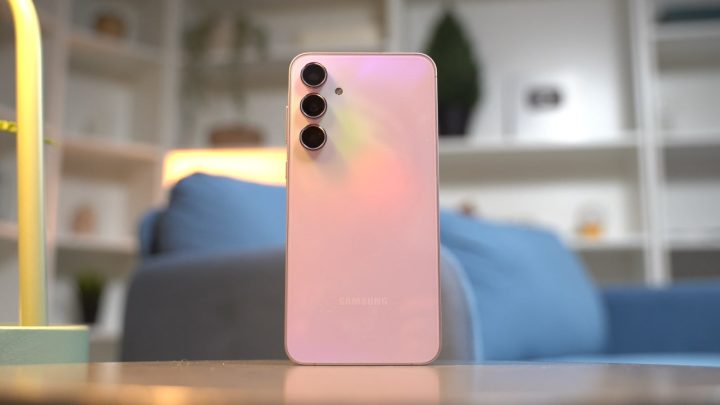
With all the bells and whistles, Galaxy A55 marks a noticeable leap forward for the A-Series. While minor setbacks like uneven bezels and mediocre cameras could see further refinement, this phone excels in core functionalities for the same price as last year’s Galaxy A54 at PHP 24,990USD 426INR 36,101EUR 406CNY 3,101 (for the 8GB+256GB trim).
Will this phone also become one of the bestsellers this 2024? Only time will tell. It’ll be interesting to see what Samsung brings to the table next.
Samsung Galaxy A55 5G specs:
6.6-inch FHD+ Super AMOLED display
1080 x 2340 pixels, 120Hz, 1000 nits (peak)
Corning Gorilla Glass Victus+
Samsung Exynos 1480
8-cores, up to 2.75GHz
8GB RAM (+8GB extended memory)
256GB storage
Expandable up to 1TB via microSD (hybrid slot)
Triple rear cameras:
– 50MP f/1.8 main, OIS
– 12MP f/2.2 ultrawide
– 5MP f/2.4 macro
32MP selfie shooter (hole punch notch)
Dual nano-SIM + eSIM
5G, 4G LTE
Wi-Fi 6 802.11a/b/g/n/ac/ax
Bluetooth 5.3
GPS, Glonass, Beidou, Galileo, QZSS
USB Type-C (USB 2.0)
NFC
In-screen fingerprint sensor, face unlock
IP67 water and dust resistance
OneUI 6.1 (Android 14)
5000mAh Li-Ion battery, 25W wired charging
161.1 x 77.4 x 8.2mm (dimensions)
213 grams (weight)
Awesome Iceblue, Awesome Navy, Awesome Lilac, Awesome Lemon

YugaTech.com is the largest and longest-running technology site in the Philippines. Originally established in October 2002, the site was transformed into a full-fledged technology platform in 2005.
How to transfer, withdraw money from PayPal to GCash
Prices of Starlink satellite in the Philippines
Install Google GBox to Huawei smartphones
Pag-IBIG MP2 online application
How to check PhilHealth contributions online
How to find your SIM card serial number
Globe, PLDT, Converge, Sky: Unli fiber internet plans compared
10 biggest games in the Google Play Store
LTO periodic medical exam for 10-year licenses
Netflix codes to unlock hidden TV shows, movies
Apple, Asus, Cherry Mobile, Huawei, LG, Nokia, Oppo, Samsung, Sony, Vivo, Xiaomi, Lenovo, Infinix Mobile, Pocophone, Honor, iPhone, OnePlus, Tecno, Realme, HTC, Gionee, Kata, IQ00, Redmi, Razer, CloudFone, Motorola, Panasonic, TCL, Wiko
Best Android smartphones between PHP 20,000 - 25,000
Smartphones under PHP 10,000 in the Philippines
Smartphones under PHP 12K Philippines
Best smartphones for kids under PHP 7,000
Smartphones under PHP 15,000 in the Philippines
Best Android smartphones between PHP 15,000 - 20,000
Smartphones under PHP 20,000 in the Philippines
Most affordable 5G phones in the Philippines under PHP 20K
5G smartphones in the Philippines under PHP 16K
Smartphone pricelist Philippines 2024
Smartphone pricelist Philippines 2023
Smartphone pricelist Philippines 2022
Smartphone pricelist Philippines 2021
Smartphone pricelist Philippines 2020
anon says:
the old A54 lasted 12 hour and 30 minutes in your video test while A55 lasted 22 hours? same test and A55 lasted 10 hours longer?
anon says:
The A55 lasted 22 hours in your video test while A54 lasted 12 hours. Were they the same test?
Abc says:
This phone has 5G reception issues:
https://www.google.com/url?sa=t&source=web&rct=j&opi=89978449&url=https://r1.community.samsung.com/t5/galaxy-a/a55-signal-always-drops-to-edge-and-stays-there/td-p/26425488&ved=2ahUKEwjHipDayeuFAxWgU2wGHX9LBL0QFnoECBMQAQ&usg=AOvVaw0IMkx8FKPhgLIL0E6ThyN-
Renze says:
Playing MLBB on this phone is very smooth, stable 120FPS even at battles and clashes. The Ultra Graphics in MLBB is available as long as you download the additional resources for that graphics. Im not a heavy gamer, so this phone is a win-win for me. The phone makes daily tasks easier and browsing much faster and smoother.